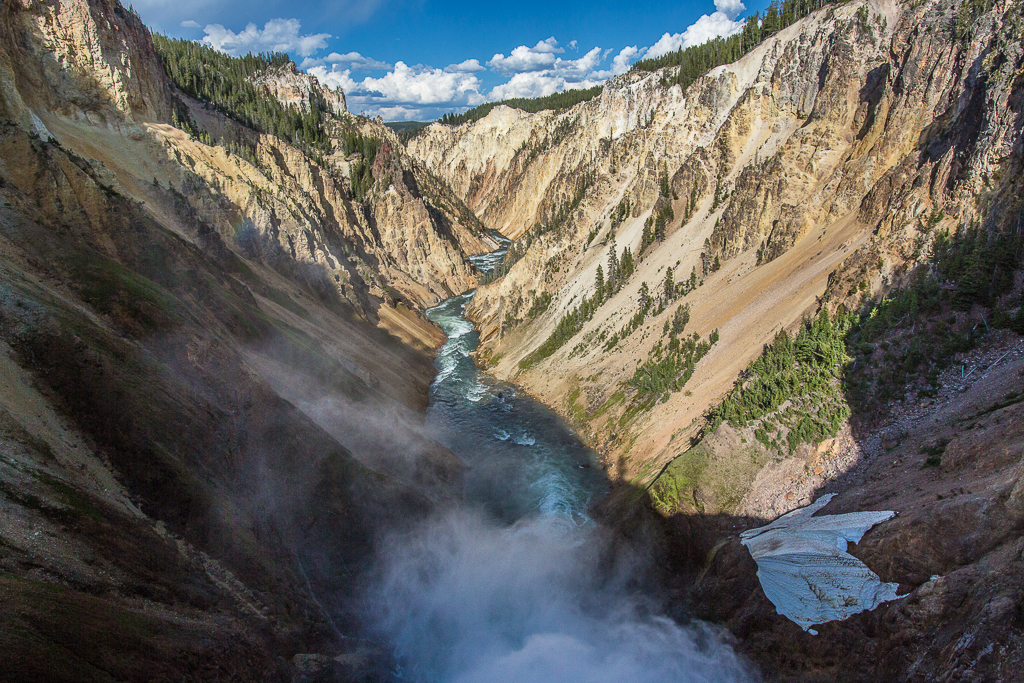This article was originally published in Fox News Opinion.
Sewage spilling into waterways in Yosemite. Water pipes leaking in the Grand Canyon. Run-down trailers housing staff in Yellowstone.
Set against the grandeur of national park landscapes across the country, these images make no sense. Yet they’re our reality thanks to a mountain of overdue maintenance that threatens the wonders the National Park Service was created to protect.
Conservation means caring for what we own. After neglecting maintenance for too long, Congress is poised to pass the Great American Outdoors Act, a bill popular for its land-acquisition component but that should also be widely praised for finally dedicating funding to deferred maintenance.
This would be a crucial step in cleaning the tarnish from our crown jewels. And as public landowners and funders, we have a duty to make sure we never let them end up in this state again.
In recent years, the number of annual national park visits has nearly exceeded the number of Americans. But enthusiasm doesn’t pay the bills, and the record number of visitors means more wear and tear on our parks. Combined with aging facilities and stagnant budgets, the maintenance bill continues to pile up.
Overdue maintenance totals $20 billion across our national parks, forests, wildlife refuges and other public lands. The bill for the National Park Service alone is roughly triple the agency’s annual budget. More than 21,000 miles of park trails need repair. Historic buildings rot and campgrounds deteriorate. Seventy percent of park infrastructure is more than 60 years old.
Until now, Congress has done little to fill in our great national pothole. The discretionary budget for parks increased just 1 percent in inflation-adjusted dollars over the past decade, while 28 new units were added during that time. This “thinning of the blood” stretches limited resources across more units and more acres, diminishing quality and stressing capacity.
Yet land acquisition gets the lion’s share of attention. After all, no one gets elected on a promise to fix leaky roofs or repair overburdened toilets, but ribbon-cutting ceremonies for new parks draw good press and public praise.
For too long, the condition of “America’s best idea” has been an afterthought. Conservation demands quality at least as much as quantity.
The Land and Water Conservation Fund (LWCF), a popular program that spends energy revenues on public lands projects, would be fully funded in perpetuity by this new legislation. At least 40 percent of its funding goes toward federal land acquisition, but that money doesn’t support the maintenance of our lands.
At the Property and Environment Research Center (PERC), for decades we have researched the incentives that seed deferred maintenance problems. Congress has finally taken notice. If the bipartisan bill under consideration passes, many people will celebrate it for permanently funding the LWCF. But it promises something even more important for conservation: the National Parks and Public Land Legacy Restoration Fund.
This fund would tap federal energy revenues as well, but rather than adding land, it would become a five-year, dedicated revenue stream of up to $9.5 billion to address existing overdue maintenance on public lands. A portion of the money could also be invested into an endowment, with proceeds available for longer-term maintenance challenges.
It’s a huge step, but the restoration fund would receive money for just a few years. The reality is that if the underlying funding framework doesn’t change, we’re at risk of beginning to accumulate a new heap of backlogged maintenance as soon as we address our current one.
Fortunately, there are other ways to help make sure our parks and other public lands are properly cared for. One would be to permanently reauthorize the Federal Lands and Recreation Enhancement Act, the program that allows land managers to charge and retain fees for the amenities they provide and is set to expire later this year. Congress should explicitly grant these park superintendents and forest supervisors the flexibility to set their own fees and use the receipts for maintenance, operations or whatever other critical projects they deem necessary from their local vantage points.
For too long, the condition of “America’s best idea” has been an afterthought. Conservation demands quality at least as much as quantity. Fixing our public lands now and into the future is how we will restore what’s great about our “Great American Outdoors.”




